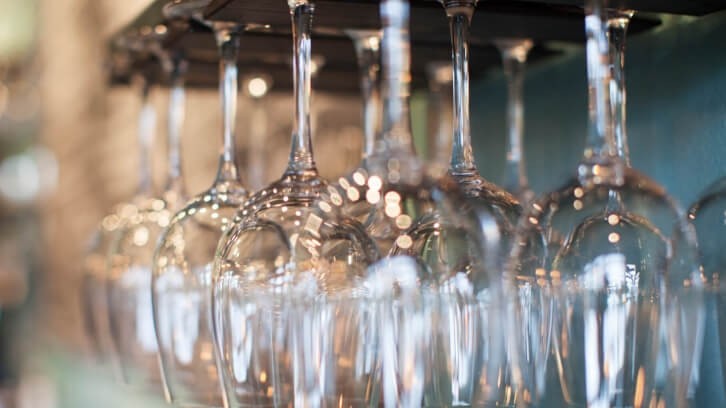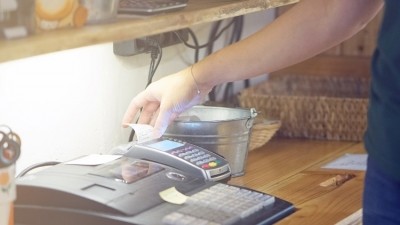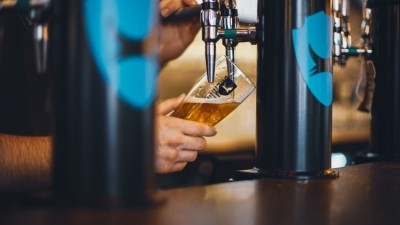DRINKS MASTERCLASS
Pubs need to 'stand out from the crowd' when it comes to wine

Unity Wine & Spirits brand ambassador Lee Isaacs told The Morning Advertiser consumers see wine as a “luxury purchase” and operators should look to instil confidence through education, communication and service.
He said: “[Operators need to] help mitigate and minimise risk for customers.
“Consumers are slowly becoming more adventurous, but that requires work from both the on and off trade to encourage that.
“If you do what everybody else is doing, you don't stand out from the crowd and you need to stand out from the crowd today. A big mistake I see pubs make is not training staff [on wine].”
However, Isaacs explained training did not need to be overly technical but rather encouraging staff to discuss the story and provenance of a brand with customers, advising the best place to start with education is suppliers.
“[If staff] can't talk about the wine list at all in any capacity, that's not going to fill the consumer with confidence.
“Selling bottles of wine and making money on it involves a huge amount of staff interaction because customers value that just as they do with food.
Basic elements
“Customers are more interested in a story than the technical aspects of how old the barrel was when the wine went into”, he continued.
In addition, the brand ambassador urged pubs to choose a member of the team that is engaged with the category to be a “wine champion”, tasked with driving sales and incentivised with rewards.
Looking at service, Isaacs urged pubs to focus on getting “the basics” right, for example not overfilling glasses and ensuring things like ice buckets are ready and properly prepared.
The use of appropriate and nice-looking stemware that differs for each wine was also a must for Isaacs, who advised operators should serve red wine in a broad-shouldered glass, white wine in a glass with big bowl and sparkling wines in a flute or tulip shaped glass.
He said: “They're basic elements of service, but it's amazing how in all walks of life we don't get the basics right, not just when serving wine.
“We live in an age now where consumers want to live the lifestyle and share that via social media, a key part of that is having brands, products and presentation that appeal to the eye.
“You should have different glassware for at least white and red, with something that's got a little bit of a stem, that allows the customers to hold it and engage in the theatrical element that's so important.”
Isaacs added while consumers are now recognising the “immense pressures” faced by hospitality, they still expect that theatrical experience from wine and a higher quality than the off-trade.
“We're at a point where visibility between the on and off trade is higher than it's ever been, and quality has to be at the forefront.
“It's a difficult tightrope to walk because you don't want to sell it too cheaply, but if your price is too high, customers just won't buy any of it”
“Most consumers now realise there are a lot of pressures in the on trade, certainly from a price perspective, but they still expect something nicer than they could have bought at the local supermarket when spending hard-earned money”, he continued.
Isaacs added wine lists were a useful tool for pubs to utilise and make sure they “stand out”.
He explained: “A customer’s first experience with your wine offering is picking up that menu.
“As with the glassware, [pubs should have] a nice quality menu, made using nice quality materials, to reflect and communicate the personality of the venue.
“Tasting notes need to be short and concise and used to excite the consumer; don't go into lots of needless verbiage about the wine.”
Isaacs also stated the second wine on a menu will often be the best-selling on the list and urged operators to try different layouts, including cross menu pairings.
He continued: “What works well is laying out a menu by style [for example fresh and fruity or bold and adventurous] rather than just simply price order.
“The easiest way to get someone to explore the world of wine is through food matching, customers are very comfortable with food.
“Where you've got fish and chips on the menu, for example, you could recommend pairing with champagne, which is a great match.
Difficult tightrope
“Conversely, on the wine list you could do a food pairing. It doesn't have to be on every wine, but you could personalise it with chef recommendations, for example.
“If you've got a specials board, it will take an extra 60 seconds to pair it with a wine off your menu. If you're not sure, phone your wine supplier and ask for advice on pairings.”
When it comes to trends, customers mostly still want the “basics” and “recognisability” from the on-trade, Isaacs said, for example Argentine Malbec’s, New Zealand Sauvignon Blanc or Italian Pinot Grigio.
Though the brand ambassador advised recognisability doesn’t necessarily come from brands, but from grape varieties and countries.
Moreover, Issacs added including something “more premium” to your wine list, like an Argentine Cabernet Franc, can also offer opportunities to encourage customers to trade up.
Though he warned operators to mark up prices reasonably and focus on cash sales rather than margins with the wine category.
He said: “People love Prosecco, for example, but they also know it's not that expensive. They’ll pay maybe up to £30 or £35 for a bottle, and it's only a £5 difference, but if you charge £40 and overshoot it, they won't buy it at all.
“It's a difficult tightrope to walk because you don't want to sell it too cheaply, but if your price is too high, customers just won't buy any of it.”








